From the Trenches
Tomb of the Wari Queens
By ERIC A. POWELL
Monday, August 12, 2013
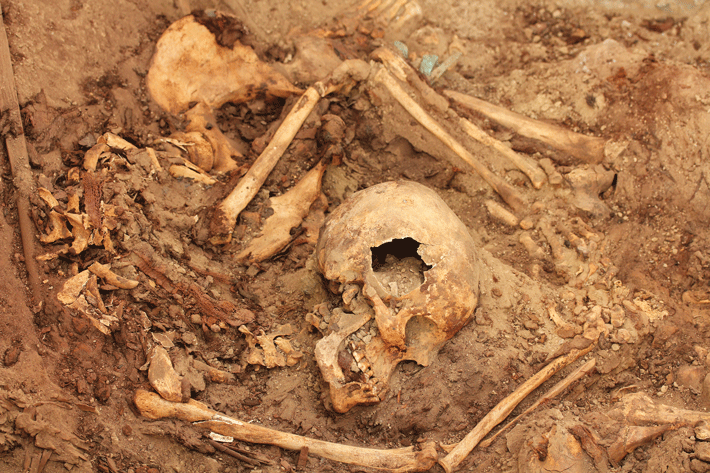
Last September, as University of Warsaw archaeologist Milosz Giersz’s team dug through rubble from the top of the biggest pyramid at the site of El Castillo de Huarmey in northern Peru, they uncovered a ceremonial chamber with a mudbrick throne inside. Below the chamber was more than 30 tons of stone fill. After removing it, the team discovered that the fill covered the only known unlooted imperial tomb belonging to the Wari, the first Andean people to forge an empire, which lasted from A.D. 700 to 1000.
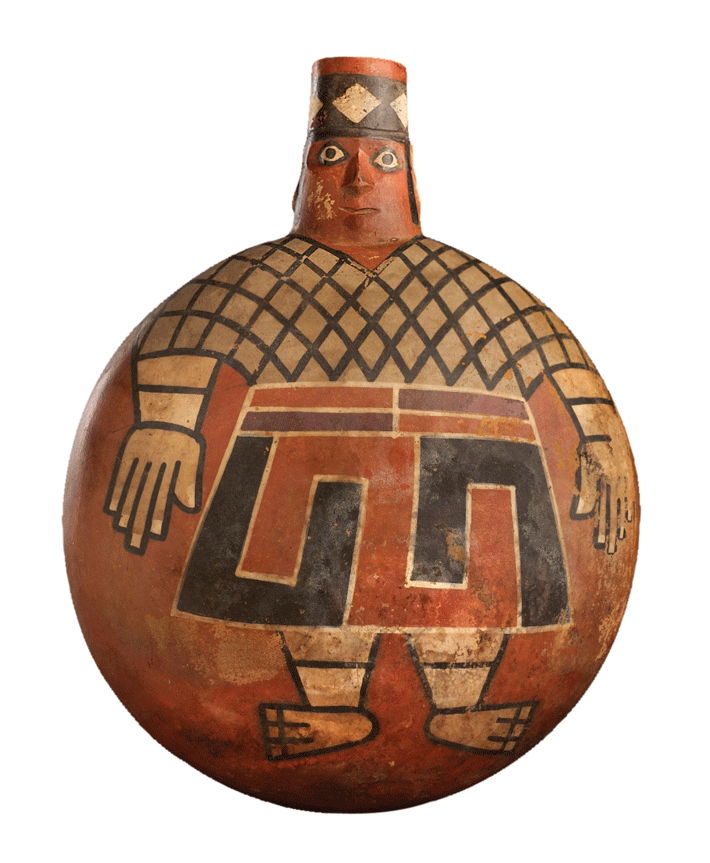 Fearing that the discovery would attract looters, the team excavated in secret and eventually found the remains of three Wari queens, one of whom was buried with a child. They also discovered the skeletons of 53 other noblewomen wrapped in burial shrouds, and six with no wrapping who were found lying facedown. “They were probably thrown in as sacrifices as the tomb was closed,” says Giersz. Among the rich array of 1,200 grave goods were silver bowls, bronze axes, and painted ceramics from all over the Andes. The queens were also buried with gold implements for sewing textiles. Since the Inca modeled their empire and many of their customs on the Wari, Giersz says studying the tomb may give archaeologists a better idea of how Inca queens were buried hundreds of years later.
Fearing that the discovery would attract looters, the team excavated in secret and eventually found the remains of three Wari queens, one of whom was buried with a child. They also discovered the skeletons of 53 other noblewomen wrapped in burial shrouds, and six with no wrapping who were found lying facedown. “They were probably thrown in as sacrifices as the tomb was closed,” says Giersz. Among the rich array of 1,200 grave goods were silver bowls, bronze axes, and painted ceramics from all over the Andes. The queens were also buried with gold implements for sewing textiles. Since the Inca modeled their empire and many of their customs on the Wari, Giersz says studying the tomb may give archaeologists a better idea of how Inca queens were buried hundreds of years later.
High-Definition Obsidian
By NIKHIL SWAMINATHAN
Monday, August 12, 2013
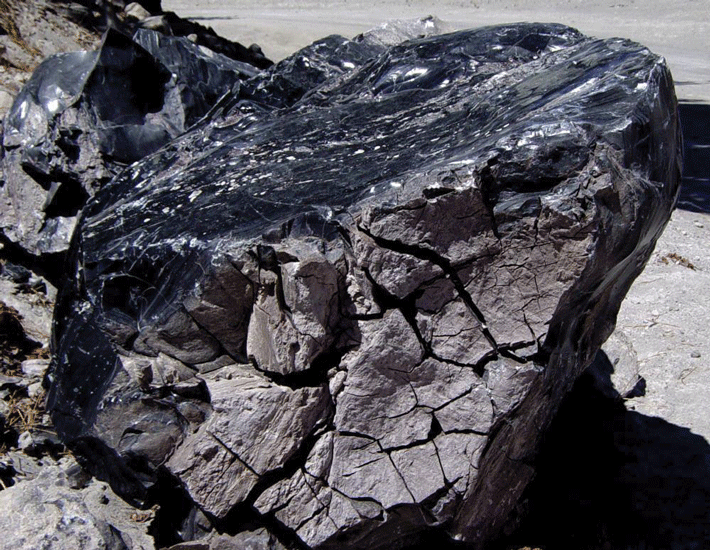 In the 1960s, British archaeologist Colin Renfrew developed a method for analyzing the chemical composition of stone tools made from volcanic obsidian. The test can identify the lava flows from which the tools were quarried. Today, portable spectrometers can deliver that information in one minute.
In the 1960s, British archaeologist Colin Renfrew developed a method for analyzing the chemical composition of stone tools made from volcanic obsidian. The test can identify the lava flows from which the tools were quarried. Today, portable spectrometers can deliver that information in one minute.
A single lava flow can create multiple quarries that can be miles apart. However, the chemical makeup of a tool can’t tell archaeologists which specific quarry it came from. A new approach involving magnetic analysis can. Sections of a lava flow cool at different rates, resulting in variations in the sizes, shapes, and orientations of the particles in the obsidian. “As the cooling conditions vary throughout a flow,” explains University of Sheffield archaeologist Ellery Frahm, “the magnetic properties also vary.”
Frahm studied more than 700 pieces of obsidian to show the material could be sourced to within mere feet—not miles—of where it came from, providing a higher-resolution look at the archaeological record.
City of Red Stone
By ERIC A. POWELL
Monday, August 12, 2013
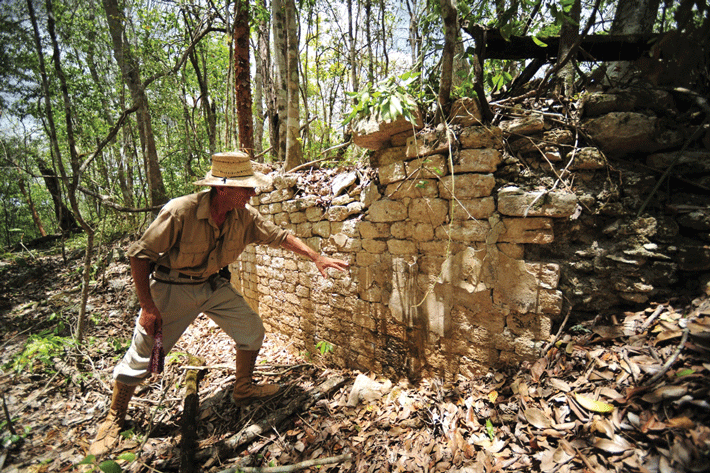
Aerial photographs of unexplored rain forests in southeastern Mexico led archaeologist Ivan Sprajc to a previously unknown Maya city. Dubbed Chactun, or “red stone,” the site flourished from A.D. 600 to 900, and features three pyramid complexes ranging across 54 acres. Once at the site, Sprajc’s team also found 19 stelae, including one with an inscription stating that it was erected on May 3, A.D. 751.
Sprajc expects to uncover more inscriptions, but he is also interested in the “afterlife” of the stelae, which were moved after Chactun’s heyday. “Some we even found upside down,” he says. “This reflects activity on the site after its period of splendor.” He hopes studying the ways the monuments were reused will help his team understand the events that led to the city’s decline.
Animal Offerings of the Aztecs
By JASON URBANUS
Monday, August 12, 2013
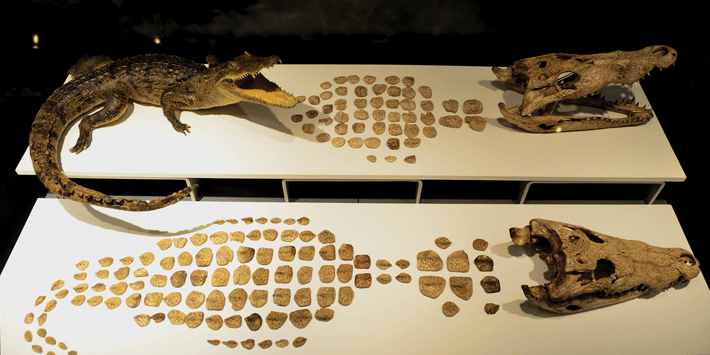
Archaeologists investigating the Aztec capital of Tenochtitlán in Mexico have discovered that more than 400 animal species were systematically deposited there as offerings to the gods. According to Mexico’s National Institute of Anthropology and History, the animals were found in 60 ritual burials, dating from 1440 to 1520, located within the Sacred Precinct, outside the Templo Mayor. The assortment of species—ranging from big cats and eagles to crocodiles and shellfish—were dedicated to the Aztec gods Tlaloc and Huitzilopochtli, whose twin shrines stood atop the temple. While mollusks and fish comprise the majority of the specimens, the collection is highlighted by 13 pumas, two jaguars, and six wolves. There is evidence the Aztecs practiced a form of taxidermy to ensure the more important animal offerings maintained their shape and beauty. The finds demonstrate that the Aztecs of Tenochtitlán participated in broad exchange systems, as many of the specimens were not local, but were acquired through trade or tribute. These included fauna from tropical rain forests, including jaguars, quetzals, crocodiles, and snakes, and many species of fish and mollusks imported from reefs in the Atlantic Ocean, more than 100 miles away.
Sifting Through Molehills
By SAMIR S. PATEL
Monday, August 12, 2013
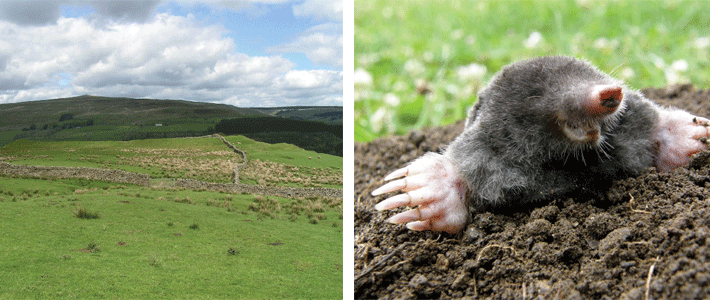
No one can dig at Epiacum, one of the best-preserved Roman forts in Britain, without special permission, but moles have little regard for the Ancient Monuments and Archaeological Areas Act of 1979. The small mammals can dig dozens of feet of tunnels a day through farm, forest, or archaeological site. Volunteers working with Paul Frodsham, an archaeologist with the North Pennines Area of Outstanding Natural Beauty, are now sifting through the molehills the critters leave outside their tunnels for pieces of pottery, glass, and other items from the second to fourth centuries. Frodsham wants to be able to learn how buildings were used at the fort, which has not seen archaeological investigation in more than 50 years. “I realize it sounds a bit ridiculous,” he says, “but it’s actually quite serious.”
Advertisement
Advertisement
IN THIS ISSUE
From the Trenches
No Changeups on the Savannah
Off the Grid
The Last Flying Pencil
Small Skirmish in the War for Freedom
Sifting Through Molehills
City of Red Stone
Animal Offerings of the Aztecs
High-Definition Obsidian
Tomb of the Wari Queens
Golden Sacrifices
Spain's Lost Jewish History
Samson and the Gate of Gaza
French Wine, Italian Vine
Neanderthal Brain Strain
Advertisement

Recent Issues
-
 May/June 2024
May/June 2024
-
 March/April 2024
March/April 2024
-
 January/February 2024
January/February 2024
-
 November/December 2023
November/December 2023
-
 September/October 2023
September/October 2023
-
 July/August 2023
July/August 2023
-
 May/June 2023
May/June 2023
-
 March/April 2023
March/April 2023
-
 January/February 2023
January/February 2023
-
 November/December 2022
November/December 2022
-
 September/October 2022
September/October 2022
-
 July/August 2022
July/August 2022
-
 May/June 2022
May/June 2022
-
 March/April 2022
March/April 2022
-
 January/February 2022
January/February 2022
-
 November/December 2021
November/December 2021
-
 September/October 2021
September/October 2021
-
 July/August 2021
July/August 2021
-
 May/June 2021
May/June 2021
-
 March/April 2021
March/April 2021
-
 January/February 2021
January/February 2021
-
 November/December 2020
November/December 2020
-
 September/October 2020
September/October 2020
-
 July/August 2020
July/August 2020
-
 May/June 2020
May/June 2020
-
 March/April 2020
March/April 2020
-
 January/February 2020
January/February 2020
-
 November/December 2019
November/December 2019
-
 September/October 2019
September/October 2019
-
 July/August 2019
July/August 2019
-
 May/June 2019
May/June 2019
-
 March/April 2019
March/April 2019
-
 January/February 2019
January/February 2019
-
 November/December 2018
November/December 2018
-
 September/October 2018
September/October 2018
-
 July/August 2018
July/August 2018
-
 May/June 2018
May/June 2018
-
 March/April 2018
March/April 2018
-
 January/February 2018
January/February 2018
-
 November/December 2017
November/December 2017
-
 September/October 2017
September/October 2017
-
 July/August 2017
July/August 2017
-
 May/June 2017
May/June 2017
-
 March/April 2017
March/April 2017
-
 January/February 2017
January/February 2017
-
 November/December 2016
November/December 2016
-
 September/October 2016
September/October 2016
-
 July/August 2016
July/August 2016
-
 May/June 2016
May/June 2016
-
 March/April 2016
March/April 2016
-
 January/February 2016
January/February 2016
-
 November/December 2015
November/December 2015
-
 September/October 2015
September/October 2015
-
 July/August 2015
July/August 2015
-
 May/June 2015
May/June 2015
-
 March/April 2015
March/April 2015
-
 January/February 2015
January/February 2015
-
 November/December 2014
November/December 2014
-
 September/October 2014
September/October 2014
-
 July/August 2014
July/August 2014
-
 May/June 2014
May/June 2014
-
 March/April 2014
March/April 2014
-
 January/February 2014
January/February 2014
-
 November/December 2013
November/December 2013
-
 September/October 2013
September/October 2013
-
 July/August 2013
July/August 2013
-
 May/June 2013
May/June 2013
-
 March/April 2013
March/April 2013
-
 January/February 2013
January/February 2013
-
 November/December 2012
November/December 2012
-
 September/October 2012
September/October 2012
-
 July/August 2012
July/August 2012
-
 May/June 2012
May/June 2012
-
 March/April 2012
March/April 2012
-
 January/February 2012
January/February 2012
-
 November/December 2011
November/December 2011
-
 September/October 2011
September/October 2011
-
 July/August 2011
July/August 2011
-
 May/June 2011
May/June 2011
-
 March/April 2011
March/April 2011
-
 January/February 2011
January/February 2011
Advertisement






